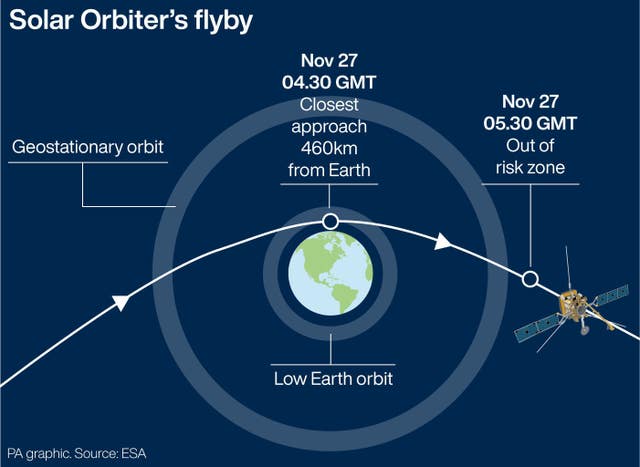Solar Orbiter to perform risky flyby of Earth
The spacecraft runs the small risk of colliding with space debris as it approaches the planet.

The Solar Orbiter will risk colliding into space debris on Saturday as it returns towards Earth for a flyby before starting its main science mission to explore the Sun.
The manoeuvre will place the spacecraft on to the correct orbit for its science phase to begin.
At closest approach, it will be around 460km above our planet – in the Low Earth Orbit zone.
This is where the International Space Station and many other spacecraft can be found, as well as a lot of space debris.

But the journey to this region is not without danger either.
The spacecraft will fly through another well-used orbital region, called Geostationary orbit, which again is congested with space debris and other satellites.
The European Space Agency (ESA) said it will closely monitor the situation and perform collision avoidance manoeuvres if necessary.
Any evasive action will be taken on Friday, about six hours before close approach.

After the flyby, regular Venus gravity assists will bring the spacecraft higher over the Sun’s never-before-seen poles, providing new details about how activity on the Sun generates space weather.
Once the Orbiter comes up from Low Earth Orbit and passes above Geostationary orbit, it is out of the risk zone. This should be about one hour after its minimum distance to Earth.
As the mission zooms off, flying with ever-so-slightly less energy than it arrived with, it and its mission teams will never have to consider space debris again.
The spacecraft was launched last February and will orbit the Sun, beaming back high-resolution photos and measuring the solar wind as part of the mission led by ESA and partly funded by the UK Space Agency.





